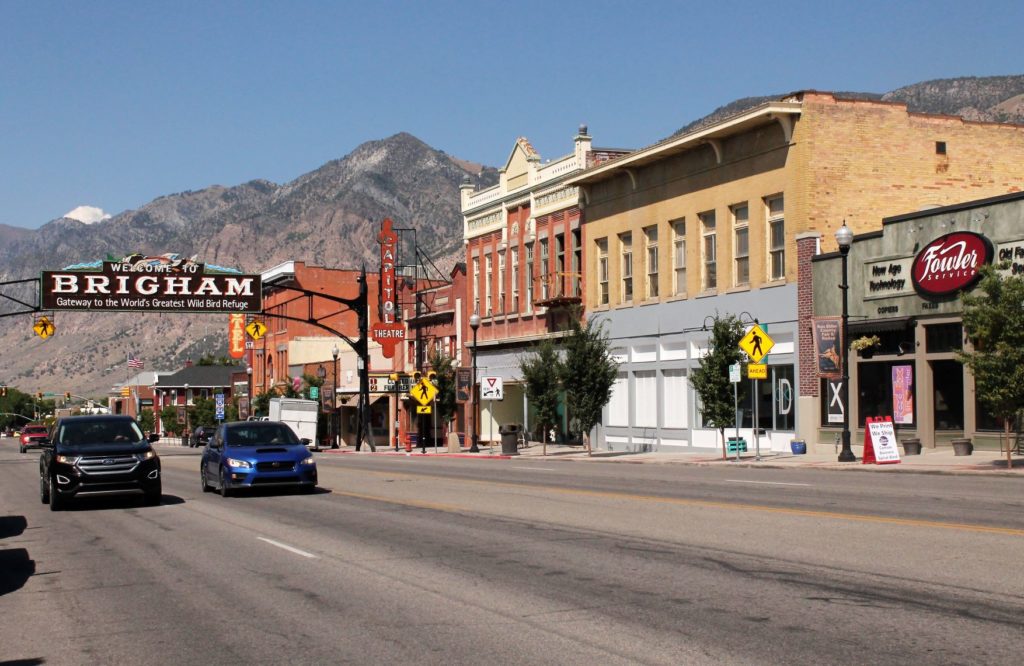
Utah received $24,000 from the USDA to help with a pilot program to bring back Main Streets across the state.
BRIGHAM CITY – Brigham City and Price are benefiting from an initiative to revitalize main streets throughout the Beehive State. Utah received $24,000 from the United States Department of Agriculture for a pilot program to bring back main street business activity in Brigham City and Price. COVID-19. took a toll on many small businesses along Utah’s community centers.

USDA stipulates the money can only be used for the following:
- Business incubators.
- Community development assistance to nonprofits and public bodies (particularly for job creation or enhancement).
- Facilities and equipment to educate and train rural residents to facilitate economic development.
- Facilities and equipment for medical care for rural residents.
- Start-up venture costs, including, but not limited to, financing fixed assets such as real estate, buildings, equipment or working capital.
- Business expansion.
- Technical assistance.
Nan Anderson, the outreach development manager for the Utah Office of Rural Development said the effort is a collaboration of several State organizations that want to see rural main streets thrive again. The main street revitalization program maybe unique in Utah, but it is active in 38 other states.
“The Utah Department of Heritage and Arts State Historic Preservation Office and the Governor’s Office of Economic Development, the Utah Office of Tourism Department, Utah Department of Transportation, the Utah Department of Heritage and Arts are all contributing members of the committee,” she said. “We are teaming up with the local economic development offices in Brigham City and Price to make this happen.”
The downtown’s in Utah have suffered from the economic impacts of coronavirus and nothing short of getting people back to shopping downtown, going to a barber shops, restaurants and precipitating in events can bring prosperity back Anderson said.
“The USDA gave a grant to the Governor’s Office of Economic Development (GOED) to help us develop a plan to revitalize main streets in Brigham City and Price,” Anderson said. “It is for downtown revitalization based on economic development.”
If the effort is successful, their goal is to lay it out for other main streets in Utah.
“The community will need to pull together organizations to find funding. It needs to be a cooperative effort between the State of Utah agencies, Main Street merchants, the community and the community organization,” she said. “Success breeds success. It takes committed business owners with fire in the belly to make this work.”

Paul Larsen, the economic development director for Brigham City, said they have been holding meetings for a couple of months trying to organize a 501c that can represent the city for the pilot program.
“Right now, we are forming an organization with some of the merchants so we can all work together and have a formal committee that will take the concepts to the next level,” he said. “COVID hit us pretty hard and it will take some time, it is a work in progress.”
Larsen said he wants a 10-10-10 approach to revitalize downtown economic activity.
“We need 10 cafés or restaurants, 10 boutiques and 10 businesses that will be open after 6 p.m. to draw people downtown,” he explained. “Most people don’t get home until after 6 p.m. and we want business that will bring people downtown in the evening.”
He said there is enough people in Brigham City that could use the work to support the employment needs of downtown businesses.
“The biggest hurdle is getting the critical mass of merchants moving in the same direction. We need our merchants to take assignments,” Larsen said. “There are two different downtown organizations formed already; I think both are interested in working with us.”
Brian Carver, the community and economic director for Bear River Association of Governments, said they have allocated $20,000 to help Brigham City with their main street efforts. The money stipulations are about the same as the USDA funds.
“I’m really excited to see what Brigham City wants to do,” Carver said. “The program could help a lot of other communities interested in preserving their main street.”
“Some might want to blame big box stores for the decline in main street commerce,” he said. “There are several factors that have contributed to a change in consumer behavior.”

People want to spend less money and less time shopping. Independent stores have less inventory and that reflects in their pricing which has caused some decline in their local markets.
“Merchants may want people to go slow on main street and Utah Department of Transportation are in the business of making sure traffic flows and cars get from one place to another as quickly as possible,” Carver said. “Larsen has been pushing to revitalize Brigham City’s Main Street for some time and it is good to see him finally getting some traction.”

